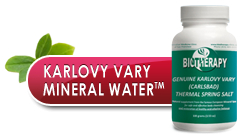Chronic abdominal pain is a primary symptom of chronic pancreatitis, and it is the only main reason to push the middle-age alcoholic to sick the medical care. From the medical statistic, the 70 percent of the chromic pancreatitis is alcoholic pancreatitis.
Pain may initially be episodic as the first attack of acute pancreatitis. It typically happens after large meals with the alcohol consumption. In our opinion, the first attack of the mild acute pancreatitis is often misdiagnosed. In many cases, this pain is ignored or is considered as gastritis, food or alcohol poisoning, stomach flu, IBS, etc. The classic character of the pancreatic pain is a severe, intermittent or constant, dull ache in the middle of the epigastria or left rib case, which radiates to the left shoulder blade and lasts for hours or days at a time.
A person may experience low appetite, gas, abdominal distention, belching, nausea or vomiting, diarrhea or constipation, fever. Severe pain can bring patients in the ER. After that, their destiny depends on the severity of acute pancreatitis; mortality here is 10-15 %. In his practice as an MD in the ICU, Peter Melamed, Ph.D. watched a young man with acute pancreatitis that died from the complete pancreatic decay (pancreonecrosis) in the 8 hours. Some, lucky enough patients discharge from the hospital with typical, vague recommendations “Do not eat spicy and fatty foods. Do not drink alcohol.”
At the beginning of this chronic disease, the blood and imaging tests may be normal or obscure, so the diagnosis of chronic pancreatitis frequently is confirmed when production of the digestive enzymes, especially lipase that digest fat, falls less than 10%. It leads to continuing diarrhea with bulky, greasy, foul-smelling stools with oil droplets, fatigue, and weight loss. Malfunction of the pancreatic gland can cause the deficiency of vital nutrients too. Repetitive courses of antibiotics destroy the friendly intestinal bacteria; therefore, frequently lead to Candida-yeast overgrow and Small Intestine Bacterial Overgrowth, increasing of inner toxicity, and weakness of the immune system.
The whole body gets worse in this stage chronic pancreatitis. Treatment options’ at this moment is very narrow.
Pancreatitis is not such as simple thing. There is no such internal organ as pancreas that can ruin itself. Very aggressive, pancreatic digestive enzymes continuously injure the inflamed pancreas causing a death of the pancreatic cells due to self-digestion. It is very similar to uncontrolled nuclear reactions, which happened in the Chernobyl or Fukushima nuclear disasters.
The first attack of the acute inflammation of the pancreas is a crucial moment. In the 8-15 years, a patient may end with the pancreatic failure-the condition that is labeled in the medical literature as chronic pancreatitis. Pancreas is not the organ that can heal by itself. In our opinion, the first attack of the mild acute pancreatitis is often misdiagnosed; therefore, the first bout of the pancreatic pain is a serious alarm signal to change the lifestyle, eating habits, alcohol drinking and more.
“The time to repair the roof is when the sun is shining.” John Kennedy.
Pain in chronic pancreatitis has the various reasons. Knowing these reasons can give the clue for treatment the root of the problem instead of routinely taking painkillers. The primary reason for pancreatitis is activation of the aggressive pancreatic digestive enzymes within the pancreas.
What may contribute to this?
- Acidic changes in the pancreatic juice and bile
- Sphincter of Oddi Dysfunction (SOD) with elevation of the pressure in the common bile duct
- Blockage of the common bile duct by big gallstone, scar tissue after inflammation or surgery, and tumor
- Toxic, harmful actions of environmental chemicals, alcohol, some medications, recreation drugs, food poisoning
- Dysbiosis (SIBO-small intestine bacterial overgrowth, Candida-yeast overgrowth, parasites)
- Dehydration
- Fatty pancreas with the high level of the blood triglycerides
- Hereditary factors and more
In the functional, acidic pancreas and bile stage, these problems can lead to the spasms of smooth muscles, indigestion, eroding of mucous membranes, distension of the stomach, small intestine, and colon, increasing visceral sensitivity to pain and spasms.
However, in the structural, pancreatic deficiency stage, there are other more serious possibilities for pain. Chronic inflammation, injury, and destruction of pancreatic tissue lead to:
- Spasms or obstruction of the Sphincter of Oddi create high pressure in the pancreatic duct
- Destruction of pancreatic tissue
- Ulcers or erosions in the duodenum and stomach due to bile reflux
- Blockage of the pancreatic duct and bile duct
- Inflammation and edema stretch the pancreas cover
- Inflammation processes extend into the pancreatic tissue or pleura
- Deficiencies of vital nutrients and inner toxicity may cause peripheral neuropathy of internal organs with pains
- Overuse of the painkillers (opioids) and psych drug can produce SOD, dependency, and opioid-induced hyperalgesia
Pancreatic failure is often characterized by constant abdominal pain accompanied by increasing worsening of exocrine and endocrine pancreatic functions that require several hospitalizations. Often, pain is related here to scarring process and adhesions after surgical procedures and severe mental stress. Many individuals with the different stages of chronic pancreatitis got gallbladder removal, and the postcholecystectomy syndrome aggravates their pains.
Nevertheless, the common actions to reduce the pain are:
- Alkalizing the pancreatic juice and bile
- Making the pancreatic juice and bile liquid and easy released
- Stop the alcohol consumption
- Stop the opioids painkillers
- Reestablishing the proper balance of the beneficial intestinal bacteria
- Natural, non-drug anti-inflammation therapy
- Natural, non-drug antispasmodic therapy
- Restoring the proper digestion of fats, proteins, and carbohydrates
- Normalizing bile acids’ metabolism
- Relaxing the nervous system, etc
It cannot be achieved by magic peel, single endoscopic manipulation. It requires complex, customized treatment program by using convention and alternative medicine approaches.
In the Biotherapy Clinic, we have the decades of the experience in treating individuals with the pancreatic pain. We can customize our healing program for the patients needs to reduce pain and indigestion and improve the quality of life in any stage of the chronic pancreatitis. Additional information one may get from our EBook “Healthy Pancreas, Healthy You” and in our website.
To obtain the benefits of the Biotherapy Clinic from healing chronic pancreatitis, one can select the following options:
- Telephone consultation (415) 409-3939
- Office consultation
References of Biotherapy
Peter Melamed, PhD and Felix Melamed, LAc, MSTCM
Healthy Pancreas, Healthy You. Part 1: Structure, Function, and Disorders of the Pancreas.
Publisher Biotherapy, Inc, September 2014. https://www.smashwords.com/books/view/236176#/longdescr
Peter Melamed, PhD and Felix Melamed, LAc, MSTCM
Healthy Pancreas, Healthy You. Part II. Healing Foods in the Digestive (Pancreatic) Disorders. Publisher Biotherapy, Inc, September 2014. https://www.smashwords.com/books/view/240466#/longdescr
Peter Melamed, PhD and Felix Melamed, LAc, MSTCM
Healthy Pancreas, Healthy You. Part 3. How to Improve the Exocrine Pancreatic Function, Postpone Pancreatic Deterioration, and Heal Digestive (Pancreatic) Disorders. Publisher Biotherapy, Inc, September 2014.
https://www.smashwords.com/books/view/248242
Peter Melamed, Felix Melamed. Chronic Metabolic Acidosis Destroys Pancreas. JOP. J Pancreas (Online) 2014 Nov 28; 15(6): 552-560
http://pancreas.imedpub.com/chronic-metabolic-acidosis-destroys-pancreas.pdf
Peter Melamed, Felix Melamed. Short Review of Our Work – “Chronic Metabolic Acidosis Destroys Pancreas” with Focus on the Functional Exocrine Pancreatic Disorders
JOP. J Pancreas (Online) 2015 Jul 08; 16(4):365-368
Peter Melamed, PhD, and Felix Melamed, MS. Acidity Kills the Pancreas. Townsend Letter, the Examiner of Alternative Medicine. August/September 2015, p. 74-80
http://www.townsendletter.com/AugSept2015/acid0815.html
Peter Melamed, Felix Melamed. The Role of the Metabolic Acidosis in the Development of Chronic Pancreatitis. SM Group (USA) Chronic Pancreatitis: Recent Advances. 2015, Aug 10
http://www.smgebooks.com/chronic-pancreatitis/chapters/CP-15-01.pdf

